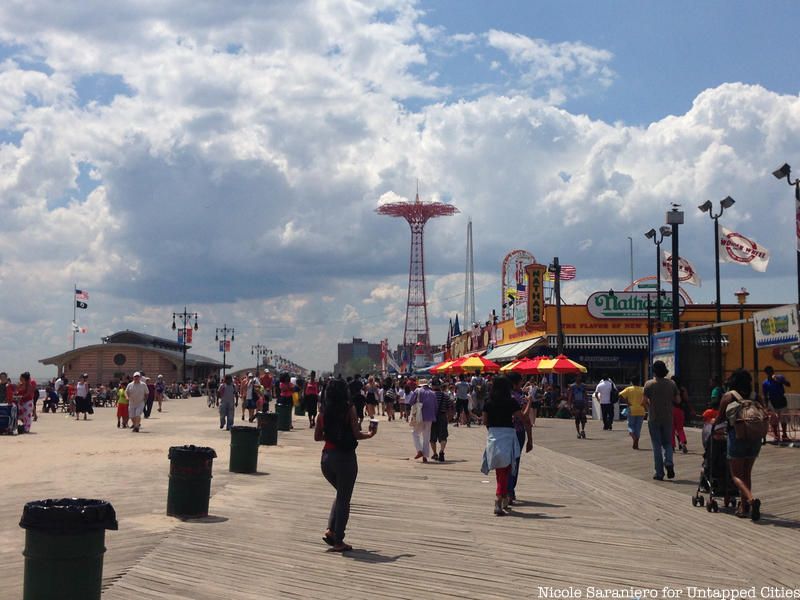100th Anniversary Great Nave Tour at the Cathedral of St. John the Divine
Celebrate the 1925 construction of the stunning nave inside the world's largest Gothic cathedral!


Last month, city officials announced plans to replace the Coney Island boardwalk with recycled plastic decking, which will cost approximately $114 million. Many local residents, though, are angered by the decision to replace a century of history with sustainable materials. As reported by Gothamist, all of the wooden planks will be replaced on the 2.7-mile Riegelmann Boardwalk, which stretches from Brighton Beach past the amusement park.
“Thanks to $114.5 million in funding from Mayor Bill de Blasio, we are proud to announce our plan to begin building a more resilient, sustainable boardwalk that protects the people and businesses that rely on it as part of their livelihood and lifestyle,” NYC Parks Commissioner Gabrielle Fialkoff said in a press release. “Its history is too important, and now its future will be secured.”
The project will occur in phases so that large portions of the boardwalk will be accessible at any time. The decision about materials has yet to be finalized, nor has the exact spot where the redesign will start. It must first be approved by mayor elect Eric Adams when he takes office in January. Once the project is completed, the boardwalk will feature “new concrete structural elements (piles, pile caps, planks), new decking, and new railings and furnishings,” according to the release.

The Riegelmann Boardwalk opened in 1923, although plans had been in the works since the 1890s. Initial meetings for the boardwalk began in 1919, and a plan was approved a year later, with construction beginning in 1922. The boardwalk was named after Brooklyn borough president Edward J. Riegelmann, who led the project’s construction. The boardwalk’s planks are sourced from ipê, a durable and rot-resistant tree from Brazil which has been heavily deforested. A 2008 report found that New York was one of the leading consumers of endangered hardwood, which has led many to advocate for converting the boardwalk to plastic.
Those in favor of the renovation have cited how the Rockaway boardwalk was rebuilt using plastic and concrete. Defenders of keeping the boardwalk wood have noted that the High Line switched to another tropical wood from southeast Asia that was less endangered. Some residents feel that the boardwalk should remain as is due to its iconic history, faulting the city for neglecting to make smaller repairs that would have improved conditions over the years. Others feel that the boardwalk is currently unsafe in parts, with wobbling sections missing some boards.
“I’m proud to have led efforts to landmark this iconic structure as well as passing legislation to prohibit large unauthorized vehicle use on it,” said Council Member Mark Treyger. “With this funding, we will be able to better preserve and maintain this Southern Brooklyn treasure for generations to come. I’ve always felt that efforts to increase resiliency and preservation of the historic features of the boardwalk go hand in hand and I look forward to additional support to improve the boardwalk under a lens of equity where support is most needed, especially in the west end of Coney Island.”
Next, check out 27 Secrets of Coney Island!
Subscribe to our newsletter